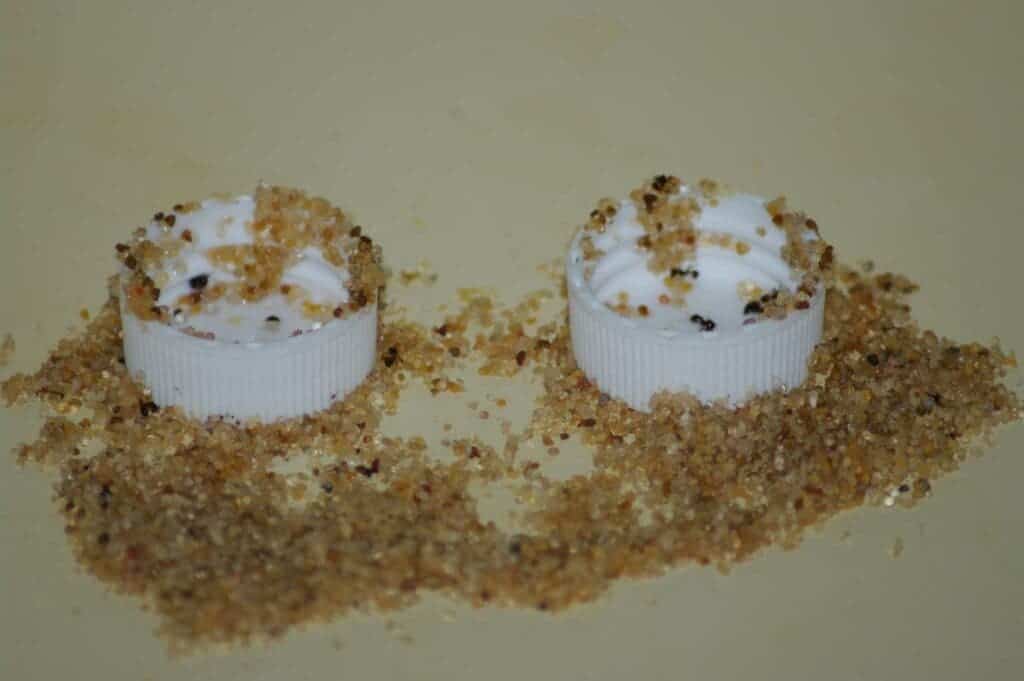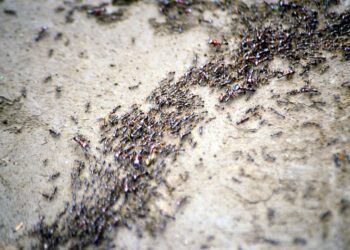
Black imported fire ants (Solenopsis richteri), or simply BIFA, have a water-repelling cuticle that allows them to float on the water’s surface. So, typically these ants face minimal risks of drowning when crossing shallow waters or foraging for food in liquid solutions.
But when researchers changed a liquid’s surface tension such that the BIFAs would stop floating, the ants were quick to adapt. Aware of the danger, the ants congregated and used nearby grains of sand to build structures that not only saved them from drowning but also enabled them to draw liquid sugar out of the containers.
The study was led by Dr. Aiming Zhou, an associate professor at Huazhong Agricultural University in Wuhan, China, in collaboration with researchers from the US, including Dr. Jian Chen, Research Entomologist at The U.S. Department of Agriculture’s (USDA) Agricultural Research Service (ARS) in Stoneville, Mississippi.
“We found that when the drowning risk of ants was elevated by adding surfactant into the sugar water, instead of foraging directly over the container, black imported fire ants changed their foraging strategy to build a sand structure that can function as a syphon. The structure quickly syphoned the sugar water out of the container, so ants can collect the liquid food outside the container. This syphon structure not only prevented ants from being drowned, but also facilitated the collection of the sugar water, likely by providing larger operational space,” Chen told ZME Science.
Danger sharpens the mind
Chen and colleagues at the USDA have been studying fire ants for many years. These insects, which have a venomous sting, are one of the most important pest ants in the United States, so the researchers were focused on developing bait products for controlling them.
While working with water-based bait products, Chen added surfactants in order to incorporate a water-insoluble active ingredient. But the ants’ reaction and extraordinary adaptive prowess stunned the scientists.
In lab experiments, the researchers noticed that the BIFAs started depositing sand grains on the inside of a container filled with sugar water mixed with the surfactant. This exceptional tool-making ability allowed the ants to draw sugar out of the container while providing a footing so they won’t drown.
That’s quite extraordinary, something that Chen was quick to notice from the beginning.
“Although this discovery came about when we were looking for something else, we wouldn’t consider it as the result of a true accident. It took a prepared mind to follow through and turn a routine observation into an unexpected discovery,” he told me in an email.
The sand structures were never observed when the ants foraged in safe containers filled with only pure sugar water. It was only when they recognized they were endangered that they quickly adapted and showed how resourceful they could be, adjusting their tool use to rise up to the challenge.
“We do not know how ants coordinate this behavior. We hope our paper will motivate others to do the related investigations,” Chen said. In any case, tool use is widely regarded as a sophisticated cognitive ability, which is mostly associated with primates and some species of birds.
Few examples of tool use have been documented among invertebrates. This study, which appeared in the journal Functional Ecology, shows that we’re only beginning to scratch the surface of what is possible and that intelligent behavior can surface in all kinds of unsuspecting scenarios.
“The next steps will be to determine how widespread this behavior is in other ant species. This study demonstrates that ants can not only recognize the increase in foraging risks, but also make corresponding adjustments to their strategy by using and building tools. The manufacture of a syphon structure to acquire liquid food has never been reported in the animal kingdom. Ants may be “smarter” than we expected,” Chen concluded.






